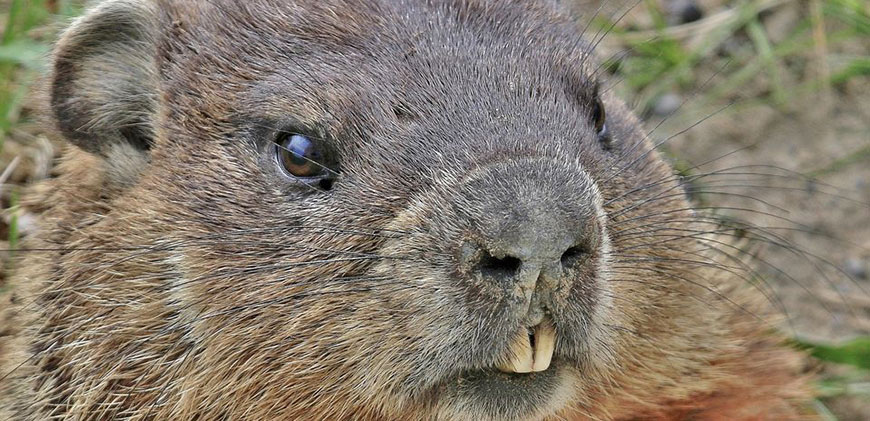
A groundhog. Credit: Dave Carnahan/National Geographic YourShot

In celebration of Groundhog Day, Feb. 2, Colorado State University Professor of Biology Greg Florant offers three fascinating facts about groundhogs, those hibernating, shadow-hating rodents. (Their talents, unfortunately, do not include weather forecasting, despite the lore. For what it’s worth, Punxsutawney Phil has predicted six more weeks of winter for 2017.)
What’s in a name?: Groundhogs are the East Coast version of the marmot, which is found in the West (Rocky Mountains and Sierra Nevada). Both belong to the genus Marmota, but are distinct species. Groundhogs, also called woodchucks, are Marmota monax. Marmots are Marmota flaviventris.
The long nap: Both groundhogs and marmots undergo hibernation from about October through March, during which they exhibit bouts of what biologists call torpor. During these periods, they reduce their body temperature from about 98.6 degrees Fahrenheit to near-ambient levels – as low as 35 degrees Fahrenheit, depending on where they are. They also reduce their respiration and heart rate one hundred-fold: from 300 beats per minute to as low as just three beats per minute. During hibernation, the animals do wake up periodically, and their body temperatures rise, but they usually enter back into torpor within a few hours. They can remain at their very low body temperatures for as long as three to four weeks.
Hold the food: Marmots and groundhogs do not eat at all during their hibernation periods. Rather, they burn the fat stores they’ve accumulated during summer and early fall. They normally double their body weight from spring to fall.